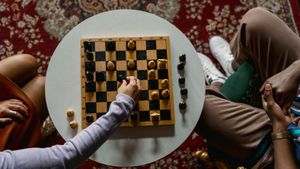An intriguing recent discovery has unveiled startling insights from ancient Pompeii, as scientists successfully extracted and analyzed ancient DNA from the archaeological site. This remarkable feat has begun to shed light on the identities of the long-gone inhabitants of this historic city, giving voice to those who were silenced by time and tragedy.
The eruption of Mount Vesuvius back in 79 AD was catastrophic, preserving the city under layers of volcanic ash for centuries and forever altering the livelihood of its residents. For years, Pompeii served as a time capsule, holding remains, artifacts, and countless mysteries waiting to be uncovered. Now, with advancements in genetic technology, researchers are pulling back the curtains on the identities of some of those who perished.
A recent collaborative study published highlights the genetic findings from ancient bones unearthed from various locations around Pompeii. The analysis, which utilized state-of-the-art DNA extraction techniques, uncovered genetic material from human remains, providing invaluable insights not only about the lineage of these people but also about their health and lifestyle.
The team, led by geneticists and archaeologists, reported earlier this month their groundbreaking findings, which included the analysis of genomic sequences. The goal was to not only identify familial connections but also assess genetic diversity within the Pompeii population. They found traces of both Mediterranean and Near Eastern ancestry, hinting at the complex cultural interactions and migrations of populations during the Roman Empire.
This research has been exciting for various reasons. Not only does it challenge the often simplistic view of Roman populations as monolithic, homogeneous entities, but it also paints Pompeii as a thriving urban hub with influences extending beyond the immediate region. The blending of diverse cultures and peoples could be seen around the Mediterranean, leaving footprints in the genetic materials available today.
Besides the familial relationships uncovered, researchers were also able to examine the health statuses of some of the individuals based on their DNA, which revealed the presence of genetic markers associated with various diseases such as tuberculosis and other infections common during ancient times. This lends valuable insight not only to the diet and lifestyle of the populace but also provides reflections on health crises of the past.
“These revelations have significant historical importance,” explained Dr. Kelly Ziskin, one of the leading geneticists on the project. “What we’re discovering about the people of Pompeii highlights their shared existence and interaction with other groups, demonstrating the importance of genetic studies as we explore ancient societies more deeply.”
The delicate balance of preserving heritage and advancing scientific inquiry has often remained debated among historians and archaeologists. The ethical concerns tied to exhuming remains and the subsequent DNA analysis cannot be understated. Researchers navigated this terrain cautiously, ensuring they respected the burial sites and the cultural significance of the finds.
The DNA findings came to life when utilized alongside traditional archaeological methods. The skeletons from which the samples were taken had already been subject to rigorous examination and cataloging, which ensured a scientific approach to the analyses. The data gathered from each individual presented researchers with the opportunity to draw broader conclusions about life and society during the Roman era.
Pompeii is not just another archaeological wonder for the history books; it stands as evidence of humanity’s resilience, adaptability, and interconnectedness. The artifacts, wall frescoes, and inscriptions uncovered have always told stories, but now the DNA findings add another layer, allowing these stories to be told through the lens of ancestry.
While the genetic analysis has provided exciting insights, it has simultaneously posed new questions. For example, how did individuals with different ancestries relate to one another? Was there significant intermarriage, and if so, how did this influence social structures? The responses may require historians and geneticists to collaborate even more closely to unravel the threads of identity from this ancient community.
With DNA research still at its dawn, many more questions beckon for scrutiny, and the team is setting its eyes on future studies. “We are now equipped to explore even more”, Dr. Ziskin mentioned. “By utilizing these genetic footprints, we can move beyond simply identifying who was there; our next steps will allow us to analyze how they engaged with their world and each other.”
This remarkable fusion of genetics and archaeology offers tantalizing potential to expand the knowledge scope concerning other ancient civilizations, catapulting the field of bioarchaeology to new heights. Techniques refined through this project could find application in other historical sites worldwide, unlocking stories long shadowed by time.
Despite the triumphs, scientific exploration of this nature grapples with boundaries; balancing public interest with ethical obligations is no small feat. The Pompeii project, already garnering attention from around the globe, urges society to contemplate the lessons we draw from our past and the myriad ways we connect with those who lived long before us.
Across the communities of today, where DNA testing has become relatively commonplace, one cannot help but wonder how these ancient narratives resonate with modern issues of identity, heritage, and belonging. The stories of our past may well provide guidance and insight as cultures around the globe continue to intermingle and evolve.
The scientific community will undoubtedly continue its quest to excavate identities and reveal the varied fabric of human existence, stitch by stitch, cell by cell, connecting the past with the present and illuminating the unique legacies we all carry forward.



